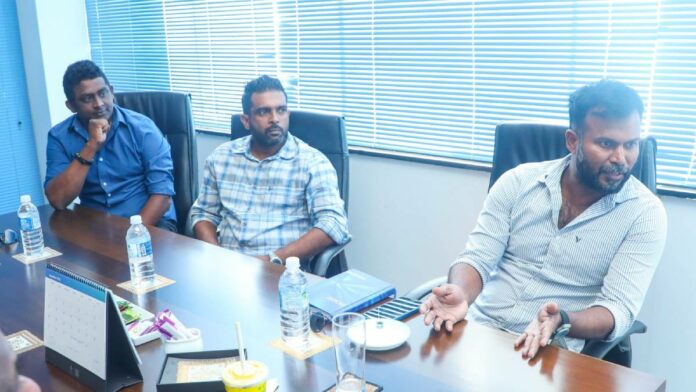A new selection panel has assumed duties and there’s lot of hope among cricket fans as fresh thinking has come on board ahead of a busy year for the national cricket team. The five-member new selection panel is said to be taking stock of things and they are expected to address the media shortly to explain their policies and the way forward.
There is some criticism about the fact that most members of the selection panel were active First-Class cricketers until recently. Not sure as to why there should be any criticism on this at all.
The fact is that most of these selectors are familiar with the current players and the growing demands of the modern-day game, and it was in fact a good call to bring recently active cricketers to the fold.
It must be reminded here that former great Aravinda de Silva was made a selector a mere few days after the 2003 World Cup in which he played a stellar role for the national team.
Aravinda’s presence in the selection panel helped the team because he knew the demands of the game at that time and more importantly provided justice for some players who had been given raw deals by the previous selection committees.
The current selectors will do well to avoid the mistakes of their immediate predecessors. Pramodya Wickremesinghe’s panel started with a highly publicized fitness policy but as they moved along there was scant respect for those policies. They in fact became a laughingstock eventually when they blamed poor fitness standards for the team’s horror show in the World Cup. They also hinted that skill levels among Sri Lankan players were below par but had conveniently forgotten that they had given the cold shoulder to half a dozen seniors.
There was also little clarity on the thinking of the former selectors. Their selection policies were never explained. Some of their decisions like leaving Avishka Fernando for the World Cup were baffling indeed but were never explained and speculation grew that the player had failed fitness tests. However, they had tolerated players who had failed fitness tests in the past. Their policies were like well-kept state secrets.
Selectors should be prepared to take tough and unpopular decisions. People will understand that at one point. But when you are forced to eat your own words then you are not going to cover yourself in glory.
Getting Kumar Sangakkara to play as a specialist batsman in Tests in 2006 proved to be a masterstroke as he went onto become the world’s number one ranked batter from thereon. Persevering with Sanath Jayasuriya despite just one half-century in 50 ODIs didn’t win many admirers at that point but this was a case of once a talent had been identified to back him to the hilt.
Similarly, there was some criticism when Mahela Jayawardene was chosen as Sanath Jayasuriya’s deputy in 1999 sidelining several seniors but it was just a case of preparing MJ for the bigger challenges and he turned out to be one of the best captains produced by the nation.
Picking Upul Tharanga himself soon after the Under-19 World Cup despite not many numbers behind him in domestic cricket became a bone of contention as there were some prolific run scorers in Premier League at that point. But he turned out to be a match winner scoring six hundreds in his first year with five of those centuries coming in places like Ahmedabad, Mohali, Lord’s, Headingly and Christchurch.
There is some talk of different captains for the three formats. While this move will satisfy key individuals you are not sure whether it is the right way forward. You either should have one captain for red ball cricket and another one for white ball cricket. The other trend seems to be to have a captain for Tests and ODIs and a different guy leading the T-20 team.
While keeping an eye on promising young talents, the selectors will do well to make most of the seniors at our disposal having gone onto claim that there are problems with skill levels.
It remains to be seen what criteria they will follow for fitness. There’s no harm in bringing down minimum fitness standards but problems will start when you are treating players with different spoons.
The main challenge ahead of the selectors is the T-20 World Cup in the Caribbean and US next year. In both recent T-20 World Cups, Sri Lanka would have fared much better and even could have reached the semi-finals if their fielding was up to scratch.
In both UAE and Australia crucial drop catches cost Sri Lanka dearly. As for the recent World Cup, their fielding was awful spilling as many as 16 catches. Let’s assume that there is a problem with skill levels, the discipline that needs least amount of skill is fielding and it can be fine tuned with hard work. Selectors should focus on that.
The team culture is another area that needs attention. The easy-going attitude is not helping Sri Lankan cricket and unless we act now we will face dire consequences. Well, we have already faced them having got knocked out from the Champions Trophy. What more do you want?














